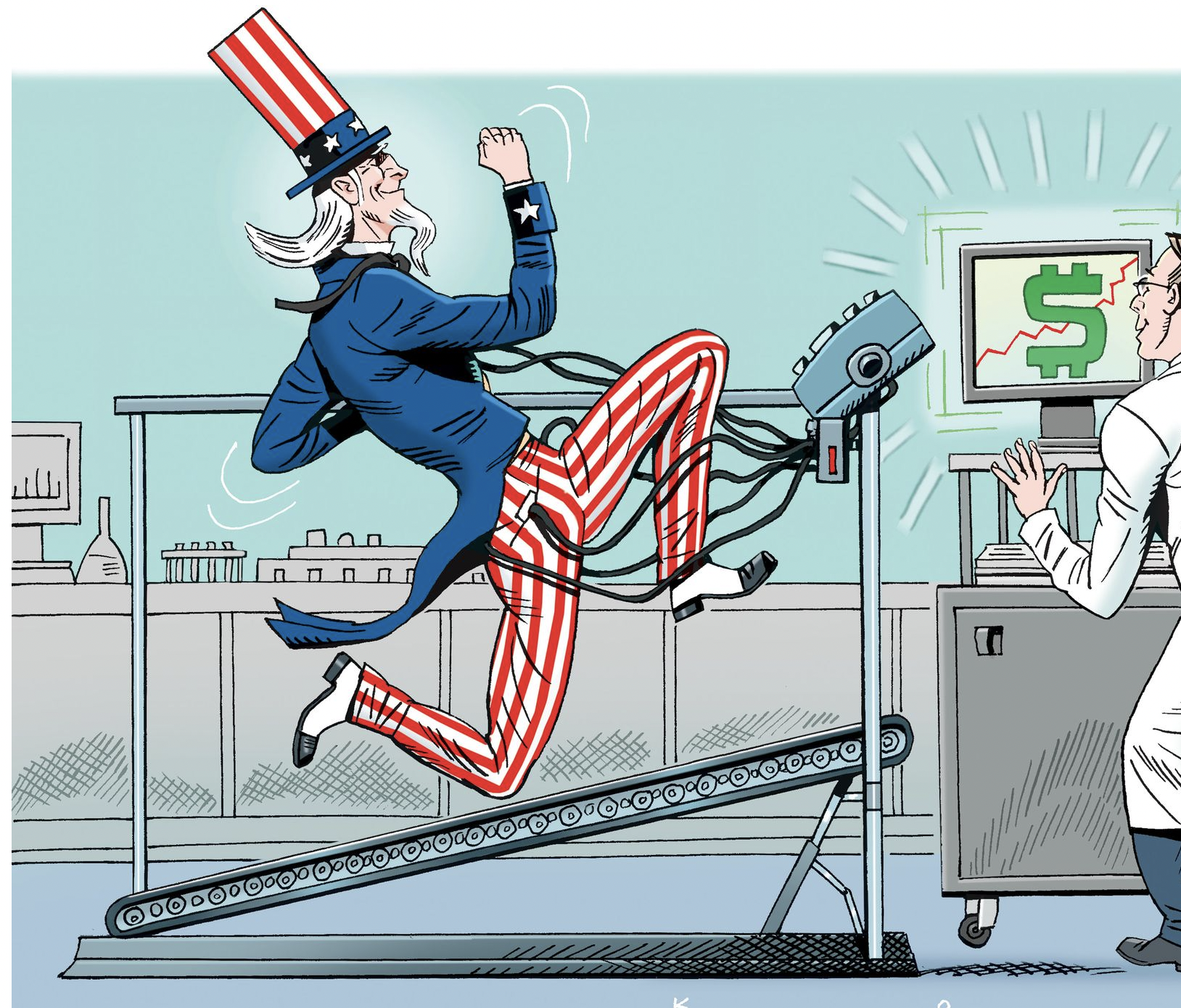As Karl Popper demonstrated, evaluating a scientific proposition requires falsifiability—theories or hypotheses can’t be proved or disproved if they can’t be subjected to empirical tests. When the 2017 Tax Cuts and Jobs Act was passed, we were criticized for being overly optimistic about the effects we predicted it would have. Now the evidence is in. Our critics were wrong, and the economic data have met or even exceeded our predictions.
In 2017, we predicted that reducing the federal corporate tax rate to 21% from 35% and introducing full expensing of new-equipment investment would boost productivity-enhancing business investment by 9%. Though growth in business investment had been slowing in the years leading up to 2017, after tax reform it surged. By the end of 2019 it was 9.4% above its pre-2017 trend, exactly in line with the prediction of our models. Looking solely at corporate businesses—those most directly affected by business-tax reform in 2017—real investment was up by as much as 14.2% over the pre-2017 trend, slightly more than we expected. Among S&P 500 companies, total capital expenditures in the two years after tax reform were 20% higher than in the two years prior, when capital expenditures actually declined.
Citing an extensive empirical literature, we also predicted that by enhancing worker bargaining power and increasing new investment in domestic plant and equipment, the average household would see real income gains of $4,000 over three to five years. In 2018 and 2019 real median household income in the U.S. rose by $5,000—a bigger increase in only two years than in the entire eight years of the preceding recovery combined. In 2019 alone, real median household income rose by $4,400, more than in the eight years from 2010 through 2017 combined.
Those extra wages contributed extra tax revenue as well. We predicted that despite a short-term drop in corporate income-tax revenue as companies expensed new-equipment investment, the combination of increased economic growth and reduced incentives to shift corporate profits overseas would result in a long-run net positive revenue effect. Before the reform, U.S. firms moved their profits overseas to avoid the highest tax of any advanced economy. After the reform, we predicted that more profits would be booked at home. For each dollar booked at home there would be a gain for the U.S. Treasury, since 21% of a positive number is much larger than 35% of zero.
Commentators have recently noticed that in the 2021 fiscal year, not only did federal corporate tax revenues come in at a record high, but corporate tax revenue as a share of the U.S. economy rose to its highest level since 2015. Actual corporate tax revenue in 2021 was $46 billion higher than the Congressional Budget Office’s post-reform forecast. Even though the U.S. economy was only slightly larger in 2021 than the CBO had projected, corporate tax revenue as a share of gross domestic product was 21% higher (1.7% versus 1.4%).
Some have attributed this good news to transitory effects related to the pandemic rather than 2017 tax reform. Yet in President Biden’s latest budget, the administration’s own baseline forecast for corporate tax revenue (i.e., before the revenue effects of its budget proposals) is now above the CBO’s pre-2017 forecast for every year from 2023 through 2027. This is true for both the level of corporate tax receipts and as a share of GDP. This optimistic forecast is consistent with our views about the long-run nature of the effects of tax reform and inconsistent with critics’ claim it has no effects.
Why are corporate tax receipts coming in not only at much higher levels, but also as a bigger share of the U.S. economy? The reason is exactly as we foreshadowed in the 2018 and 2019 Economic Reports of the President. By neutralizing the favorable tax treatment of selling intellectual-property services overseas via a foreign subsidiary, and by taxing past corporate earnings previously sheltered in those foreign subsidiaries, the 2017 tax law effectively created an incentive for multinational enterprises to move their profits home.
As a result, not only did domestic pretax earnings grow by a greater percentage than total pretax earnings between 2019 and 2021, they also grew by more for companies with greater foreign-derived income from intellectual property, meaning these firms were either repatriating intellectual property to the U.S. or locating less new intellectual property outside the U.S.
This is reflected in aggregate international transactions data from the Bureau of Economic Analysis, which shows that firms were repatriating only 36% of prior-year foreign earnings, and reinvesting 70% abroad, in the years leading up to 2017. Since 2019 they have on average repatriated 57%, and reinvested only 47% abroad. Overall since 2017, firms have repatriated $1.8 trillion in past overseas earnings.
In addition, the average annual dollar value of acquisitions by U.S. companies of foreign assets in 2018 and 2019 was 50% higher than in the two preceding years, while acquisitions of U.S. assets by foreign companies declined by 25%. Multinationals find the idea of domiciling in the U.S. and pursuing outbound acquisitions increasingly appealing. U.S. companies, on the other hand, are increasingly uninterested in being acquired by foreign multinationals and domiciling in lower-tax jurisdictions.
One of the exciting aspects of academic discovery is the opportunity to test theories and hypotheses against real-world data. In 2017, we put our hypotheses about the effects of corporate tax reform in the public record and have passed the test. The White House and Democrats in Congress should think twice about undoing the corporate tax reform and partisan economic pundits should point their criticisms at something else.
Mr. Goodspeed is a fellow at the Hoover Institution and served as acting chairman of the White House Council of Economic Advisers, 2020-21. Mr. Hassett is a distinguished visiting fellow at Hoover and was chairman of the council, 2017-19.







